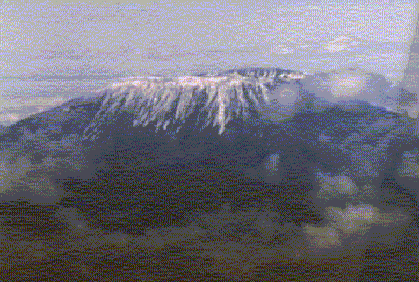
My Kenya Safari
Wild life Photography
This gallery includes wild life photographs taken in the Masai Mara Game reserve in Kenya
The safari was undertaken during the wildebeest migration. These animals migrate to Tanzania every year to Serengeti Plains seeking green pastures at the onset of dry season in Kenya - it is most spectral event. Millions of wildebeast walk in straight lines onwards to their destination.
Inevitably, the predators such as lions, cheetahs, hyena, jackals and wild dogs follow the herds. These are followed by the scavengers i.e. vultures, and other birds. At river crossings, the crocodiles await their dinner.
The migration has a daily drama of its own. The migratory wildebeest fight over females, guard their harems, wildebeest mothers give birth to the young on the move, the old, frail and sick drop off to the delight of the predators.
Insects clear away the dung and lay eggs in the wake. The zebra's join the march to seek safety in numbers. Different species meet at the water holes or river crossings to drink water.
The migration is followed lastly by photographers like tourists and me who gape at the marvel of the wild life.
Start of the wild life photography adventure
My first glimpse of Africa was mount kilmanjaro from Plane window as we were passing by the highest mountain in Africa. The only place in the tropics has an ice cap. the foothills of the mountain are inhabited by wild animals.

Arrival at the Masai Mara lodge
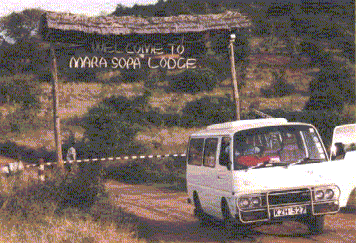 Masai Mara is the biggest game reserve in Kenya.
Masai Mara is the biggest game reserve in Kenya.
It is also the home to a fierce tribe called the Masai.
The roads here are called shifting roads - the roads disappear after heavy rainfall.
The Journey to Masai Mara is through the Great Rift Valley.
There are two large lakes in the valley the Nivasha and Nakaru. Along side lake navisha is mount Longonut. In my school days we used to climb, Longonut and run round the crater. Legend has it that lake navisha keeps the lava cool. The day the lake dries up - Longonut will erupt with a mighty roar. The lakes are homes to the flamingo's - millions live on the lake and from the distance
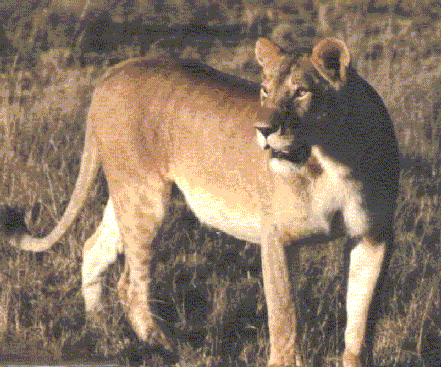 The hunt begins
First, encounter with a lioness. Lioness hunts for the food. Males and cubs wait for the food to be brought to them. Here the lioness looks for an opportunity to seize a wildebeest.
The hunt begins
First, encounter with a lioness. Lioness hunts for the food. Males and cubs wait for the food to be brought to them. Here the lioness looks for an opportunity to seize a wildebeest.
|
|
The lioness moves in stealthily for the kill. The strategy involved was to rush in straight into the middle of the herd, this confused the wildebeest who ran wildly into all directions. By using, these methods of attach the lioness also avoided being stampeded. the lion, and the cubs watched from a safe distance.
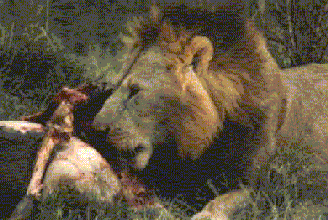
The lion has the first share of the kill.
Well he does protect the females in his pride and provides tender loving care.
the lions were the scrooge of the railway crews when my ancestors first build the railway line in Kenya through the tsavo plains.
African wild buffalo
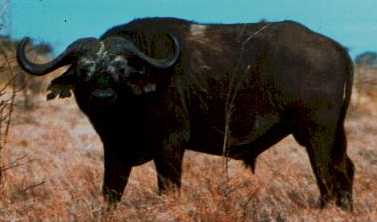
The buffalo roam Africa in large herds. The horns are lethal.
The buffalo weigh half a ton and are known to run fast.
Encounter with a Hyena Family
Hyena is a strange looking vicious animal, a scavenger, but hunts in his own right as part of a pack. Hyenas have the strong jaw and easily crunch and swallow crunched bones. My driver told me that if one follows a hyena long enough - hyena will take you to its cave. Well, being game for anything, I followed the hyena for half a day. Eventually he took us to his den. This is the first time I have seen hyena in a totally different light. It is a very social animal, family orientated and caring! The young are cared by hyena baby sitters - other hyena females. Hyena return to the pack seemed a very joyous occasion. Perhaps the happiness was because i had been invited to visit the family.
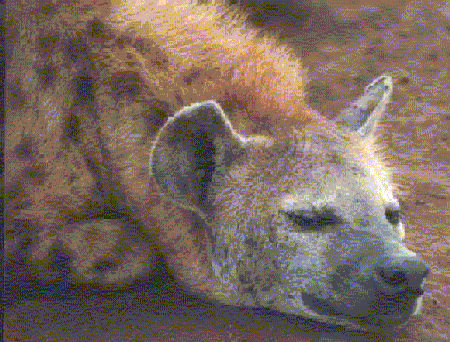
click next for kenya safari part II
Note this site is under - construction - i intend to complete this gallery with some of my favourite wildlife shots that have been included in exhibitions
all copy rights reserved